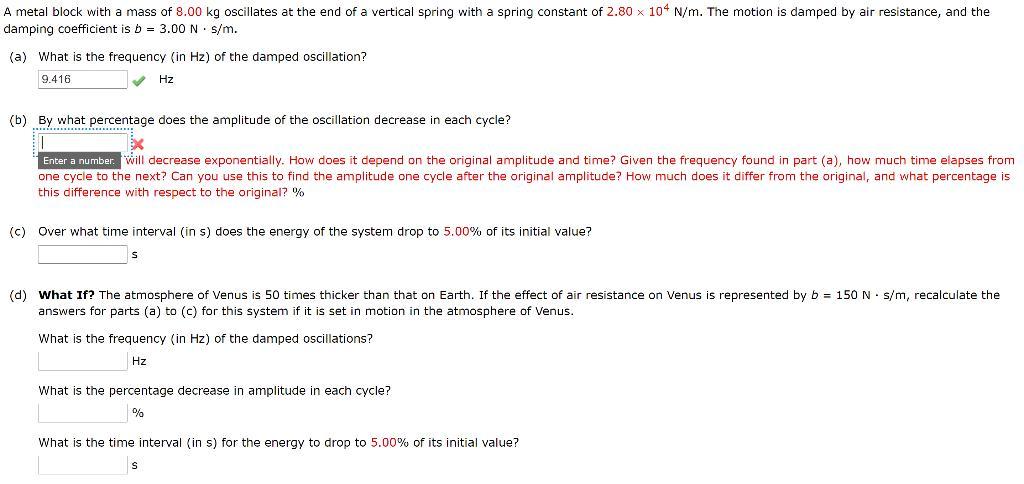Answered step by step
Verified Expert Solution
Question
1 Approved Answer
A metal block with a mass of 8.00 kg oscillates at the end of a vertical spring with a spring constant of 2.80 x

A metal block with a mass of 8.00 kg oscillates at the end of a vertical spring with a spring constant of 2.80 x 10* N/m. The motion is damped by air resistance, and the damping coefficient is b = 3.00 N s/m. (a) What is the frequency (in Hz) of the damped oscillation? 9.416 Hz (b) By what percentage does the amplitude of the oscillation decrease in each cycle? Enter a number. will decrease exponentially. How does it depend on the original amplitude and time? Given the frequency found in part (a), how much time elapses from one cycle to the next? Can you use this to find the amplitude one cycle after the original amplitude? How much does it differ from the original, and what percentage is this difference with respect to the original? % (c) Over what time interval (in s) does the energy of the system drop to 5.00% of its initial value? (d) What If? The atmosphere of Venus is 50 times thicker than that on Earth. If the effect of air resistance on Venus is represented by b = 150 N. s/m, recalculate the answers for parts (a) to (c) for this system if it is set in motion in the atmosphere of Venus. What is the frequency (in Hz) of the damped oscillations? Hz What is the percentage decrease in amplitude in each cycle? % What is the time interval (in s) for the energy to drop to 5.00% of its initial value? S
Step by Step Solution
★★★★★
3.51 Rating (148 Votes )
There are 3 Steps involved in it
Step: 1

Get Instant Access to Expert-Tailored Solutions
See step-by-step solutions with expert insights and AI powered tools for academic success
Step: 2

Step: 3

Ace Your Homework with AI
Get the answers you need in no time with our AI-driven, step-by-step assistance
Get Started


